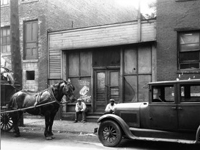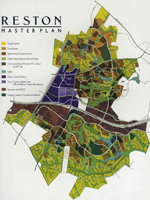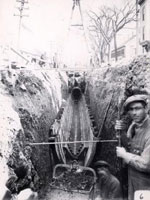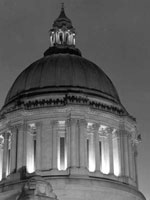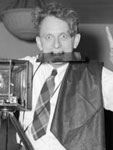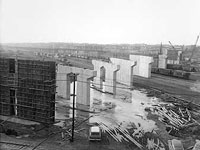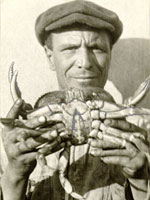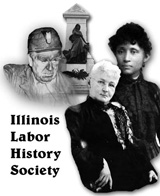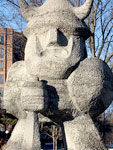These research reports are a way of understanding some of the products that are coming into the market, and the advertising and marketing strategies that are being employed, and with that, it's also an insight into the attitudes and aspirations of many people in the '40s and '50s, who had not had anything as children, had been poor, and suddenly find themselves in the situation of relative affluence. So, it's a view, it offers insight into, of course, the changing marketplace, but I think more profoundly, into the changing desires and horizons of consumption that become possible for Americans, you know, after the end of World War II, and with the beginning of the post-war prosperity.
The document I've brought here today is a study. It’s called "Creative Memo on Lay's Products," and it was prepared by Ernest Dichter of the Institute for Motivational Research. Mr. Dichter, or Dr. Dichter, was the leading market research psychologist of the 1950s and the 1960s, and this research report is one of 2,000 that's in the collection of the Hagley Museum and Library. This report is a very important report. It recommends advertising policy to Lay's potato chips in the 1950s, and recommends how they should expand their sales. And it reflects the wide range of materials that Mr. Dichter has in his collection about all industries in the United States, from baked goods to cars to toys, to all sorts of areas in which he uses market research to tell producers how to sell their goods to the public.
And in this report he uses in-depth research interviews with consumers, observational techniques, to figure out why Lay's can't sell more potato chips. And the problem, he discovers, is that people view potato chips as a snack food, as a food that's probably unhealthy, as a food which is a luxury; therefore, it acts as a restraint on sales. And so he recommends a series of steps for the Lay's company to address this.
The preeminent one is to portray potato chips as a real food by having it placed in settings such as school lunches and institutional cafeterias and restaurants, as a side dish. And the idea behind that is that if you receive potato chips as part of a meal, you're not going to think about them as a snack. You're not going to think about them as unhealthy. You're going to think about them as food. And if you think about that as food, you're more likely to purchase them to have in the house on an ongoing basis.
And, of course, Lay's then takes this and does a wide range of marketing and approaching restaurants and other places to put potato chips in regular meals, and in so doing transformed the way consumers think about potato chips as a food item. It's a very significant report, because it's obviously very successful in the kind of consumption that we have of potato chips.
And, I brought it here because it reflects the use of market research in the 1950s and the 1960s, to expand consumption and to influence the attitudes of consumers.
It's also very useful to understand the consumer marketplace. His use of interviews, and his derivation of the results, allows you to understand not just what companies were trying to do, but what consumers thought.
And in these reports, this one as many others, there are extended quotes from consumers, there's data, there's all sorts of information about consumer attitudes to various products, towards various things. And that information can be used for many other purposes, not just studying potato chips.
But, for understanding attitudes towards children's consumption, there's a lot in this report about children, about all sorts of other topics. So, these reports are useful for both understanding it as a business source, how firms expanded their products, but also to get at a topic which is very hard to get at. What did people think? What were their attitudes? What were their underlying assumptions about goods in the marketplace?
He advises that what advertising has to do for the firms is turn chips into a mealtime food, quote, "As an acceptable food, a real food." Or an another example, this is again Dichter's advice, "Potato chips must be taken out of the category of foods which must be fought against." In other words, changing consumer ideas.
Here is another case where he is referring to the fear that consumers have that potato chips are bad. One person says, "I love them, but I don't like to have them around as they're so fattening. You can't stop eating them once you start." Now, this is interpreted by him as creating two problems. One is that people don't want to have them, you know, in the house. Instead, they're likely to buy them on impulse for snacking. That's a problem. But, the other is, what he would interpret from a Freudian sense, as this person feeling that somehow they're seductive, somehow they are a temptation to be resisted. And that's why he advises, "Make it a regular food."
So rather than treating them as a luxury, as sort of a—as like chocolate, you don't want them to be chocolate, you want them to be potato—like French-fried potatoes, like carrots. Something that you add to your food so that—as a conventional food, so you don't have this sort of fear that, quote, "You can't stop eating them once you start."
Well, to suggest this off the top of my head, I would do a survey of the class first, asking them their attitudes towards potato chips, and I would do a little market research myself, before they ever read this. And I would structure that report just to engage with some of the issues that Dr. Dichter has in here. "Is it healthy? You know, when do you have it? When do you eat potato chips? What is your parents' attitudes towards them?" etcetera, etcetera, etcetera. Then I would give them the report, and then I would ask them to either discuss, or perhaps answer some questions, about how they think the report has influenced their attitudes, and then have a discussion about that. I mean, that way they could see the way that what they do has been influenced, or perhaps not influenced, you know, by this orientation that Dichter suggested. In a classroom setting, you could ask students also to interview their parents about their attitudes towards potato chips. So, you could have structured into a class, both assessment as to what extent this report influenced the way people eat potato chips, and to what extent it is fantasy, to what extent that Dichter has ideas that he can transform attitudes, that he's unable to do so. You could ask students to do some research in different periodicals to see what the themes were of Lay's potato chips advertising, or other kinds of advertising—and that could teach them how to interpret the ads and to see the intent, you know, behind them.
